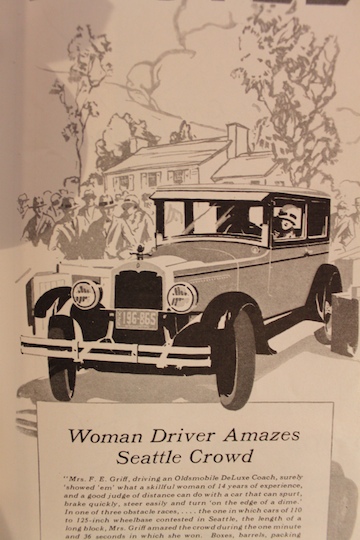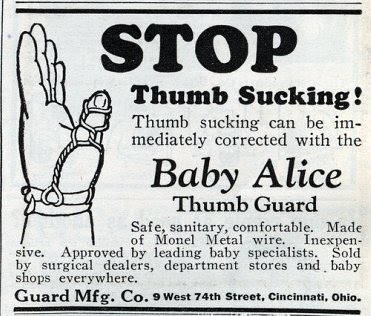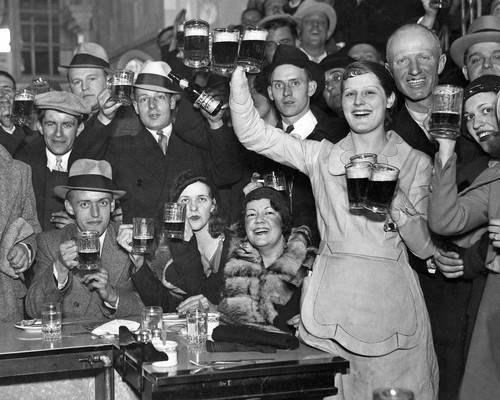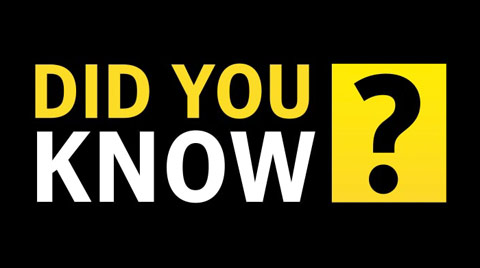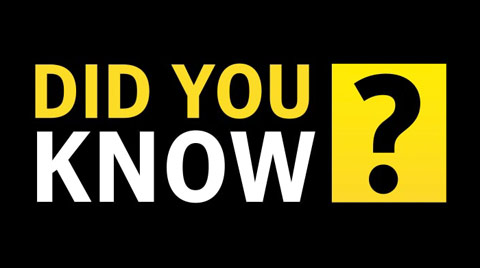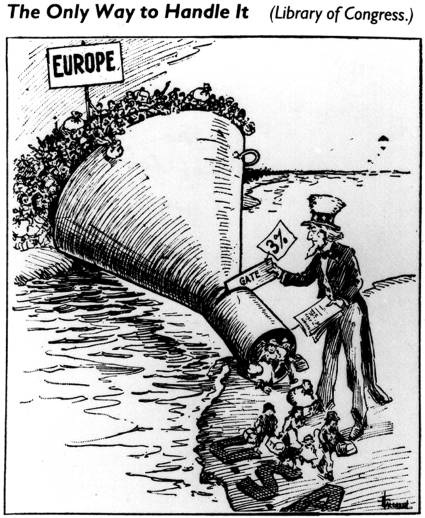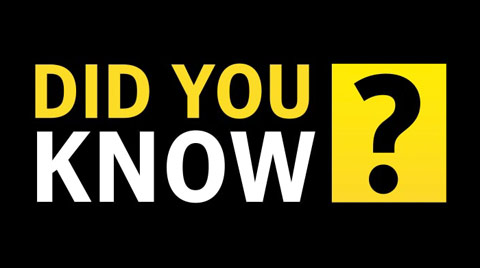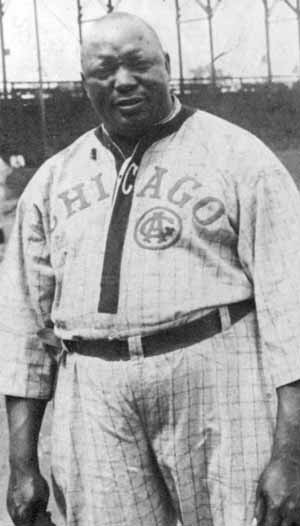Scramblin' thru... the Roaring '20s
Flappers, Bootleggers & Capone!
World War I made the U.S. a world power. While European nations tried to recover from the war, the U.S. entered an era of prosperity during the 1920s as the economy expanded. Assembly-line production, easy credit, and advertising characterized the "Roaring Twenties". As profits soared, America's desire for reform waned, and business and government resumed their long-term friendship.
But not all Americans enjoyed the rewards of prosperity. A mix of economic change, political conservatism, and cultural conflict made the 1920s a decade of contradictions... and not as "roaring" as one might come to think. In fact, the 1920s was like a golden turd. Beautiful on the outside... filled with nasty problems on the inside. The "Roaring" Auto IndustryThe first hurdle the U.S. had to face was shifting gears from a wartime economy to that of peacetime. With the stoppage of military spending and the return of soldiers looking for work, the U.S. actually experienced a brief recession at the start of the decade. However, thanks to the booming automobile industry, this recession was short-lived. Henry Ford's introduction of the assembly line jump-started automobile production and cut production costs, making cars less expensive and more available to average citizens. In fact, the cost of a new Model T dropped from $500 in 1920 to $360 in 1925. State-funded programs to build roads and highways changed the nation's landscape. Previously isolated rural areas filled with tourist cabins and gas stations. New suburbs with single-family homes popped up at the outskirts of cities. Construction soared.
Mine! Mine! Mine!The 1920s witnessed new patterns of consumption, creating mass markets for goods. Energy use tripled, and electricity reached 60% of American homes. Industry produced new home appliances such as refrigerators, washing machines, and vacuum cleaners. Advertising fed a desire for consumer goods. Extensive credit and installment purchases let people buy on credit (like our cerdit cards today)... which turned items once considered "luxuries" into "necessities". (This credit would be one of the causes of the next decade's Great Depression.) Chain stores, such as the Atlantic & Pacific Supermarket (A&P), put local retailers out of business. Canned goods and commercial breads replaced homemade products. America was transforming into the country we know today.
Pop... Goes the Culture!Leisure industries also relied on mass production. Amusements of the "old days" (like amateur theatricals and sleigh rides) gave way to new industries in entertainment and culture. Rural or urban, Americans nationwide read mass-circulation magazines, full of ads, such as The Saturday Evening Post, Reader's Digest, or The Ladies' Home Journal. They listened on the radio to popular music, comedy shows, and commercials... all being broadcasted by new radio networks such as National Broadcasting Company (NBC) and Columbia Broadcasting System (CBS). Motion pictures gained vast urban audiences, and Al Jolson's film The Jazz Singer introduced sound to movie audiences (called "talkies"). America learned how to stalk their favorite celebrities thanks to film magazines. The press also tracked other stars, such as Charles Lindbergh, who flew the first transatlantic flight in 1927, or novelist F. Scott Fitzgerald (famous for his book The Great Gatsby) and his wife, Zelda, who epitomized an icon of the 1920s, the flapper. (Luckily, America got its act together and now idolozes Honey Boo Boo and the talentless Kardashians.)
You Go, Girl!The 1920s also saw the emergence of new values that challenged traditional views. Many groups (like women, the young, and African-Americans) felt a new sense of power and freedom. When men went off to fight in WWI, millions of women took their places in factories. Many Americans saw it as hypocritical to fight to "make the world safe for democracy" while denying citizens a home the opportunity to participate in it. In 1920, the 19th Amendment established that no state could deny a citizen the right to vote based on their sex. After a half-century of struggle, women had finally won the right to vote. With more women voting and working outside the home, women became more assertive. As a result, "rebellious" women known as flappers began to smoke and drink in public (gasp!), wear skirts that didn't cover their ankles (double gasp!), use the "hip lingo" of the time ("Bee's Knees!"), and go out on unchaperoned dates (game changer!).
The Jazz Age & Black NationalismThe migration of African-Americans from the South to Northern cities, known as the "Great Migration," began in WWI and increased during the 1920s. The center of African-American life was Harlem, a New York City neighborhood, where jazz music flourished. The 1920s is often referred to as the "Jazz Age", giving a nod to the importance of African-American music. The awakening of African-American culture in these years became known as the "Harlem Renaissance". As black creativity flourished, African-Americans began to raise their voices for equality. Interest also arose in Black Nationalism. Some African-Americans became followers of Jamaican Black Nationalist Marcus Garvey, who urged racial pride, formed the Universal Negro Improvement Association (UNIA), and led a "Back to Africa" movement. At its height, the UNIA claimed more than 2 million members. It declined after Garvey was convicted of fraudand deported to Jamaica in 1927.
The Golden Age of SportsThe popularity of sports took off during the 1920s. With the work force changing and with shorter hours legally in effect, people had more free time at the end of the day, which translated into more time at the end of the week. The spread of radios across the country allowed people to follow sports from their own homes. All kinds of sports became popular in the 1920s, causing many to dub the decade the "Golden Age of Sports". Baseball (with Babe Ruth) football (with Red Grange and Knute Rockne), boxing (with Jack Dempsey), horse racing (with Man O' War), tennis (with Bill Tilden), and golf (with Bobby Jones) were just some of the events that captured America's attention.
The Golden TurdTrue to its "golden turd" nickname, the 1920s saw the rise of nativism and a distrust of foreigners. After the fall of the Russian Czar during WWI to internal Communist forces, Americans became afraid that something like that could happen at home, resulting in the first "Red Scare". Foreigners suspected of having radical sympathies were deported. (A similar scare would break out again in the 1950s; it was led by Senator Joseph McCarthy.) As a result of the "Red Scare", political activism came to a halt. Social criticism continued to appear in literary magazines, but many Progressives fled the U.S. and settled in Paris. Progressivism faded. Some parts of the U.S. saw a revival of the Ku Klux Klan (KKK), which opposed foreigners, blacks, and Jews. The Immigration Acts of 1921, 1924, and 1929 restricted immigration from Southern and Eastern Europe by setting quotas (or limits) for each nationality.
No Booze for You!Alcohol was banned in 1919 by the 18th Amendment. The ensuing battle over this "Prohibition" came to characterize the divisive spirit of the 1920s. Organized crime entered the liquor business, resulting in a network of speakeasies that sprouted a crime wave. Prohibition was repealed by the 21st Amendment in 1933... which oddly coincided with the worst year of the Great Depression. (What would Dr. Phil say about that?)
That's All, Folks!In 1929, the first year for President Herbert Hoover in office, the prosperity of the "Roaring Twenties" capsized. On October 24, 1929, the stock market collapsed. Fortunes vanished in days. Consumers stopped buying, businesses laid off workers in droves, banks cut off credit, and a downward spiral began. The Great Depression would last through the 1930s until the U.S. entered World War II.
|
Young and uninhibited, the flapper represented much
of what typified the Jazz Age of the 1920s... youthful rebellion and female independence. Although a symbol of liberation, the flapper was, in fact, the ultimate consumer. With her bobbed hairdos, short skirts, makeup, and cigarettes, she supported growth industries such as the beauty parlor, the ready-made clothing industry, cosmetic manufacture, and tobacco production. Consumerism linked the carefree mood of the Jazz Age with the dominance of big business. Conflict also arose over religious fundamentalism. In 1925, John T. Scopes, a 25-year-old Tennessee teacher, was tried for breaking a state law that prohibited the teaching of the theory of evolution in schools. This theory, its foes said, contradicted the account of creation in the Bible. Scopes and the American Civil Liberties Union believed that the law violated freedom of speech, an argument made by Scopes' lawyer, Clarence Darrow. Reporters converged on Dayton, Tennessee, to witness the courtroom battle between traditionalism and modernism... in what became dubbed the Scopes Monkey Trial. Scopes was convicted and fined $100, although the verdict was later reversed on technical grounds by the Tennessee State Supreme Court.
In 1919, Attorney General A.
Mitchell Palmer created the General Intelligence Division (GID) to investigate
American radicals. Led by a Justice Department attorney named J. Edgar Hoover, the GID targeted anarchists, Communists, union leaders, civil rights activists, and foreigners. In the "Palmer Raids" of January 2-6, 1920, special agents and local police arrested thousands of Communists and suspected sympathizers across the country. However, the FBI came under criticism when an independent review uncovered a range of abuses during the raids, including illegal searches and seizures, warrantless arrests, denial of legal counsel, and poor detainment conditions. But, they were Commies, soooo... no one cared. Baby Ruth is a delicious candy bar made of peanuts, caramel, and chocolate-flavored nougat covered in more chocolate. Created by the Curtiss Candy Company, it debuted in 1921 and quickly became a staple of the Chicago-based company for 70 years. (Baby Ruth is currently owned by Nestlé.)
Even though the name of the candy bar sounds like that of baseball icon Babe Ruth, the Curtiss Company claimed that it was named after President Grover Cleveland's daughter, Ruth. This remains debated since the candy was named "Baby Ruth" in 1921 (as Babe Ruth's fame was on the rise) and over 30 years after Cleveland had left the White House... and 17 years after his daughter had died. Personally, I don't care why it's called what it's called... it's just an incredible piece of fantastic-nummy-delightful-ness. (Yes, I just invented a new word...) The nativist and anti-radical tilt of the country was put on prominent display during the Sacco-Vanzetti Case. When a payroll holdup at a shoe factory in Massachusetts left 2 men dead, an eyewitness said that the two robbers "looked
Italian". On the strength of that, two immigrants named Nicola Sacco and Bartolomeo Vanzetti were arrested and the Sacco-Vanzetti Case began. Sacco and Vanzetti all ready had 3 strikes: (1) They were Italian; (2) They were immigrants; and (3) They were anarchists. They were quickly tried by a judge whose mind was all ready made up about what he called "those anarchist bastards". (Exactly what you want the judge to say BEFORE a trial...) They were found guilty and executed by electric chair in 1927. Years later, FBI files and ballistic reports showed that Sacco was guilty and Vanzetti was innocent. The case evoked protests from Socialists, radicals, and prominent intellectuals, and remained a source of conflict for decades. Fifty years after their death, Michael Dukakis, the Governor of Massachusetts issued a proclamation, effectively absolving the men of the crime. Because of Dukakis' childlike wonder, birthday wishes, and "a-little-to-late" pardon, the two men came back to life and lived happily ever after. The Great Gatsby, written by F. Scott Fitzgerald, was published in 1925. The story follows Nick Carraway, a young man from Minnesota, who moves to New York in the summer of 1922. Got it? Now here's a one sentence summary of the book:
Poor man falls in love with rich girl and spends the rest of his life getting rich to impress her, but no matter how rich he is and how many parties he throws, he's never good enough... and dies alone. The National Origins Act of 1924 set an annual quota of 2% on immigration and
limited the number from each country to the proportion of people of that nationality in the 1890 population. Say what? This meant that if there were 100,000 Italians living in the U.S. in 1890, only 2,000 (or 2%) would be allowed in each year. It also said that after 1927, the total number of immigrants admitted from "selected countries" was not to exceed 150,000 per year. The law blatantly discriminated against Southern and Eastern Europeans, and excluded just about every Asian immigrant. Due to segregation laws, African-Americans were not permitted to play professional baseball with white athletes, so, they formed their own leagues. The Negro National League (NNL) was founded on February 13, 1920 with 8 teams. It was the first African-American baseball league to last more than one season. At first, the league operated mainly in the Midwest, ranging from Kansas City in the west to Pittsburgh in the east; in 1924, it expanded into the south, adding franchises in Birmingham and Memphis. The NNL folded in 1931 due to the Great Depression. Still, at its peak, it fielded 24 teams, of which the Chicago American Giants were the most successful, winning 5 championships.
A second Negro National League began two years after the first collapsed, and it ran from 1933-1948. When MLB began integration in 1947 (with Jackie Robinson breaking the color barrier on April 15, 1947), this attracted other black players to its ranks. This forced the second NNL to shut down. Eddie Klep was the "White Jackie Robinson" of the NNL. Klep became the first white player to play in the all-black league when he pitched 7 innings for the Cleveland Buckeyes on May 29, 1946. |









